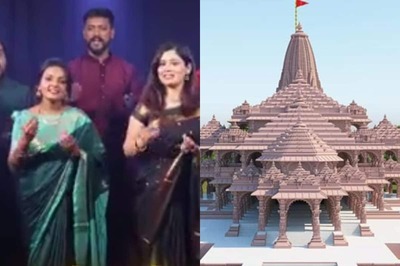
views
The Indian Institute of Technology (IIT) Madras is set to host the JEE Advance Architecture Aptitude Test (AAT) 2024, scheduled for June 12, 2024. Prospective candidates can initiate the online registration process from June 9, 2024, with the deadline for registrations closing on June 10, 2024. Simultaneously, the Joint Seat Allocation (JoSAA) 2024 process is tentatively slated to commence on June 10, 2024. The eagerly awaited results of the AAT 2024 will be officially announced on June 15, 2024.
This examination serves as the gateway for admission into the Bachelor of Architecture (BArch) programs offered by prestigious institutions such as IIT Bombay, IIT Roorkee, and IIT BHU.
Also Read| JEE Advanced 2024 on May 26, Registration to Begin from April 21
AAT 2024: Syllabus Overview
The syllabus for the Architecture Aptitude Test, as delineated on the official website of the JEE Advanced, encompasses a comprehensive array of topics designed to assess candidates’ proficiency in various dimensions crucial for architectural studies.
1. Freehand Drawing
The Freehand Drawing section is crafted to evaluate candidates’ ability to illustrate objects in their correct form and proportion. Emphasizing surface texture, relative location, and component details, this segment requires candidates to depict everyday objects from memory, such as furniture and equipment. This exercise challenges participants to showcase their creative flair and spatial understanding.
2. Geometrical Drawing
Geometrical Drawing is an essential component, featuring exercises in drawing geometric elements like lines, angles, triangles, quadrilaterals, polygons, and circles. The study of plan (top view) and elevation (front or side views) of simple solid objects, including prisms, cones, cylinders, cubes, and splayed surface holders, is integral to this section. Candidates are tested on their precision in rendering two-dimensional representations of three-dimensional objects.
3. Three-dimensional Perception
This section delves into candidates’ understanding and appreciation of three-dimensional forms, incorporating elements of building design, color, volume, and orientation. The Three-dimensional Perception segment challenges participants to visualize and structure objects in their memory, assessing their spatial cognition and design visualization skills.
4. Imagination and Aesthetic Sensitivity
Imagination and Aesthetic Sensitivity constitute a crucial aspect of architectural aptitude. This segment evaluates candidates’ sense of color grouping and application through composition exercises with given elements. Context mapping is employed to gauge participants’ artistic expression and creative interpretation, essential attributes in the field of architecture.
5. Architectural Awareness
The Architectural Awareness section aims to test candidates’ general interest and awareness of renowned architectural creations on both national and international scales. This includes familiarity with prominent architectural personalities, designers, and iconic structures. The questions in this segment challenge candidates to demonstrate their knowledge of architectural history and contemporary achievements in the domain.




















Comments
0 comment